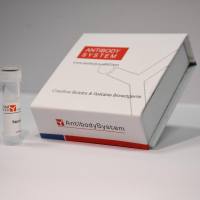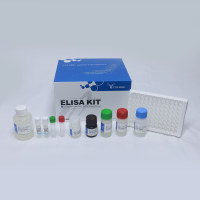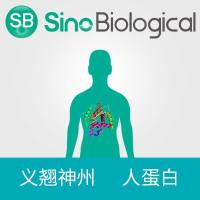Patient‐Derived Models of Human Breast Cancer: Protocols for In Vitro and In Vivo Applications in Tumor Biology and Translational Medicine
互联网
- Abstract
- Table of Contents
- Materials
- Figures
- Literature Cited
Abstract
Research models that replicate the diverse genetic and molecular landscape of breast cancer are critical for developing the next?generation therapeutic entities that can target specific cancer subtypes. Patient?derived tumorgrafts, generated by transplanting primary human tumor samples into immune?compromised mice, are a valuable method to model the clinical diversity of breast cancer in mice, and are a potential resource in personalized medicine. Primary tumorgrafts also enable in vivo testing of therapeutics and make possible the use of patient cancer tissue for in vitro screens. Described in this unit are a variety of protocols including tissue collection, biospecimen tracking, tissue processing, transplantation, and three?dimensional culturing of xenografted tissue, which enable use of bona fide uncultured human tissue in designing and validating cancer therapies. Curr. Protoc. Pharmacol. 60:14.23.1?14.23.43. © 2013 by John Wiley & Sons, Inc.
Keywords: breast cancer; tumorgraft; organoid; 3D culture; Matrigel; EHS matrix; biospecimen; tissue repository; tissue collection; xenograft
Table of Contents
- Introduction
- Basic Protocol 1: Processing Human Breast Tumors and Tumorgrafts into Fragments, Organoids, and Single Cells
- Basic Protocol 2: Processing Human Body Fluid (e.g., Pleural Effusion, Ascites)
- Basic Protocol 3: Characterization of Single Cells Isolated from Human Tumors, Body Fluid, or from Tumor Graft Tissue Using Fluorescence Activated Cell Sorting (FACS)
- Basic Protocol 4: Subcutaneous Implantation of Estrogen Pellets in Mice Receiving Estrogen Receptor–Positive Tumors
- Basic Protocol 5: Implantation of Breast Tumor Tissue Fragments into Mice
- Basic Protocol 6: Transplanting Tumor Cells and Organoids into Mice
- Basic Protocol 7: Harvesting Tumorgrafts from Mice
- Basic Protocol 8: Producing and Utilization of Lentiviruses for Transduction of Tumor Cells
- Basic Protocol 9: Three‐Dimensional Primary Tumor Cultures
- Support Protocol 1: Obtaining Fresh Breast Tumor (e.g., Surgical Specimens, Body Fluids, and Metastases) from Patients
- Support Protocol 2: Preparation of Estrogen Pellets
- Support Protocol 3: Preparation of Growth Factor–Reduced EHS Matrix
- Reagents and Solutions
- Commentary
- Literature Cited
- Figures
- Tables
Materials
Basic Protocol 1: Processing Human Breast Tumors and Tumorgrafts into Fragments, Organoids, and Single Cells
Materials
Basic Protocol 2: Processing Human Body Fluid (e.g., Pleural Effusion, Ascites)
Materials
Basic Protocol 3: Characterization of Single Cells Isolated from Human Tumors, Body Fluid, or from Tumor Graft Tissue Using Fluorescence Activated Cell Sorting (FACS)
Materials
Basic Protocol 4: Subcutaneous Implantation of Estrogen Pellets in Mice Receiving Estrogen Receptor–Positive Tumors
Materials
Basic Protocol 5: Implantation of Breast Tumor Tissue Fragments into Mice
Materials
Basic Protocol 6: Transplanting Tumor Cells and Organoids into Mice
Materials
Basic Protocol 7: Harvesting Tumorgrafts from Mice
Materials
Basic Protocol 8: Producing and Utilization of Lentiviruses for Transduction of Tumor Cells
Materials
Basic Protocol 9: Three‐Dimensional Primary Tumor Cultures
Materials
Support Protocol 1: Obtaining Fresh Breast Tumor (e.g., Surgical Specimens, Body Fluids, and Metastases) from Patients
Materials
Support Protocol 2: Preparation of Estrogen Pellets
Materials
Support Protocol 3: Preparation of Growth Factor–Reduced EHS Matrix
Materials
|
Figures
-
Figure 14.23.1 Tumorgrafts resemble the original tumors from which they were derived. A representative ER‐ PR‐ HER2‐ tumor graft (HCI−001) is shown in comparison to the original patient sample. The tumor ID and the original clinical diagnosis for ER, PR, and HER2 are shown at the top. Sections from the patient's primary breast tumor (patient), and from representative tumor grafts from the same patient (graft). Stains shown are hematoxylin and eosin (H&E) as well as antibody stains for ER, PR, HER2, cytokeratin (CK), E‐cadherin (E‐cad), β‐catenin (β‐cat), and human‐specific vimentin (hVim). Positive antibody signals are brown in color, with hematoxylin (blue) counterstain. Some images are shown at higher magnification to visualize nuclear staining. All scale bars correspond to 100 µm. This figure was reprinted from DeRose et al. () with permission View Image -
Figure 14.23.2 Example of breast tumor tissue isolated from a patient. (A ) Surgical sample containing tumor tissue (white‐pink color) and fat (yellow color). (B ) Fragments of the same tissue sample following removal of the fat and dissection into approximately 4 × 2‐mm pieces, ready for implantation into mammary fat pads. The halo surrounding the tissue is due to the fluid used to keep the samples moist during processing. View Image -
Figure 14.23.3 Metastatic tumor cells collected from a pleural effusion and viewed using light microscopy. These breast tumor cells aggregated into organoid‐like structures, which were easily separated from single cells such as leukocytes that were present in the original specimen. Scale bar is 100 µm. View Image -
Figure 14.23.4 (A ) PE1007070 and (B ) PE1008032, which are primary cells isolated from pleural effusions from two separate patients, were analyzed by FACS for 7‐AAD and lineage markers in combination with either CD44/CD24 or EPCAM/CD49f. (C ) Primary cells isolated from pleural effusions from seven patients were analyzed by FACS for lineage markers and CD44/CD24. View Image -
Figure 14.23.5 Schematic showing location of mouse mammary fat pads, surgical incisions, and sites for tissue/cell transplants and the estrogen pellet implant. Mouse diagram was adapted from Hummel et al. () with permission of The Jackson Laboratory. View Image -
Figure 14.23.6 Analysis of the viability of patient‐derived breast cancer organoids in 3‐D culture following drug treatment. Primary tumor organoids were embedded in Matrigel and grown in 3‐D culture. Organoids were treated with (A ) DMSO or valproic acid for 4 days, or (B ) DMSO or taxol for 7 days, and imaged using both DIC (bottom rows) and fluorescence microscopy (top rows). Live/dead discrimination was performed using calcein AM (green) to mark viable cells, and ethidium bromide homodimer‐1 (red) to identify dead cells. Scale bars represents 20 µm. Panel A was adapted from Cohen, et al. () with permission. View Image
Videos
Literature Cited
| Literature Cited | |
| Al‐Hajj, M., Wicha, M.S., Benito‐Hernandez, A., Morrison, S.J., and Clarke, M.F. 2003. Prospective identification of tumorigenic breast cancer cells. Proc. Natl. Acad. Sci. U.S.A. 100:3983‐3988. | |
| Borowsky, A.D. 2011. Choosing a mouse model: Experimental biology in context—the utility and limitations of mouse models of breast cancer. Cold Spring Harb. Perspect. Biol. 3:a009670. | |
| Burdall, S., Hanby, A., Lansdown, M., and Speirs, V. 2003. Breast cancer cell lines: Friend or foe? Breast Cancer Res. 5:89‐95. | |
| Caligiuri, I., Rizzolio, F., Boffo, S., Giordano, A., and Toffoli, G. 2012. Critical choices for modeling breast cancer in transgenic mouse models. J. Cell. Physiol. 227:2988‐2991. | |
| Cespedes, M.V., Casanova, I., Parreno, M., and Mangues, R. 2006. Mouse models in oncogenesis and cancer therapy. Clin. Transl. Oncol. 8:318‐329. | |
| Clarke, R. 1996. Human breast cancer cell line xenografts as models of breast cancer: The immunobiologies of recipient mice and the characteristics of several tumorigenic cell lines. Breast Cancer Res. Treat. 39:69‐86. | |
| Cohen, A.L., Soldi, R., Zhang, H., Gustafson, A.M., Wilcox, R., Welm, B.E., Chang, J.T., Johnson, E., Spira, A., Jeffrey, S.S., and Bild, A.H. 2011. A pharmacogenomic method for individualized prediction of drug sensitivity. Mol. Syst. Biol. 7:513. | |
| Coligan, J.E., Kruisbeek, A.M., Margulies, D.H., Shevach, E.M., and Strober, W. (eds.) 2012. Current Protocols in Immunology. John Wiley & Sons, Hoboken, N.J. | |
| DeRose, Y.S., Wang, G., Lin, Y.‐C., Bernard, P.S., Buys, S.S., Ebbert, M.T.W., Factor, R., Matsen, C., Milash, B.A., Nelson, E., Neumayer, L., Randall, R.L., Stijleman, I.J., Welm, B.E., and Welm, A.L. 2011. Tumor grafts derived from women with breast cancer authentically reflect tumor pathology, growth, metastasis and disease outcomes. Nat. Med. 17:1514‐1520. | |
| Donovan, J. and Brown, P. 2006. Euthanasia. Curr. Protoc. Immunol. 73:1.8.1‐1.8.4. | |
| Garbe, J.C., Bhattacharya, S., Merchant, B., Bassett, E., Swisshelm, K., Feiler, H.S., Wyrobek, A.J., and Stampfer, M.R. 2009. Molecular distinctions between stasis and telomere attrition senescence barriers shown by long‐term culture of normal human mammary epithelial cells. Cancer Res. 69:7557‐7568. | |
| Gupta, P.B. and Kuperwasser, C. 2004. Disease models of breast cancer. Drug Discov. Today Dis. Models 1:9‐16. | |
| Holliday, D.L. and Speirs, V. 2011. Choosing the right cell line for breast cancer research. Breast Cancer Res. 13:215. | |
| Huh, S.H., Do, H.J., Lim, H.Y., Kim, D.K., Choi, S.J., Song, H., Kim, N.H., Park, J.K., Chang, W.K., Chung, H.M., and Kim, J.H. 2007. Optimization of 25 kDa linear polyethylenimine for efficient gene delivery. Biologicals 35:165‐171. | |
| Hummel, K.P., Richardson, F.L., and Fekete, E. 1966. Anatomy. In Biology of the Laboratory Mouse (E.L. Green, ed.) Chapter 13. Dover, New York. http://www.informatics.jax.org/greenbook/. | |
| Kao, J., Salari, K., Bocanegra, M., Choi, Y.L., Girard, L., Gandhi, J., Kwei, K.A., Hernandez‐Boussard, T., Wang, P., Gazdar, A.F., Minna, J.D., and Pollack, J.R. 2009. Molecular profiling of breast cancer cell lines defines relevant tumor models and provides a resource for cancer gene discovery. PLoS One 4:e6146. | |
| Keller, P., Lin, A., Arendt, L., Klebba, I., Jones, A., Rudnick, J., DiMeo, T., Gilmore, H., Jefferson, D., Graham, R., Naber, S., Schnitt, S., and Kuperwasser, C. 2010. Mapping the cellular and molecular heterogeneity of normal and malignant breast tissues and cultured cell lines. Breast Cancer Res. 12:R87. | |
| Kerbel, R.S. 2003. Human tumor xenografts as predictive preclinical models for anticancer drug activity in humans: Better than commonly perceived—but they can be improved. Cancer Biol. Ther. 2:S134‐S139. | |
| Kibbey, M.C. 1994. Maintenance of the EHS sarcoma and matrigel preparation. Methods Cell Sci. 16:227‐230. | |
| Neve, R.M., Chin, K., Fridlyand, J., Yeh, J., Baehner, F.L., Fevr, T., Clark, L., Bayani, N., Coppe, J.P., Tong, F., Speed, T., Spellman, P.T., DeVries, S., Lapuk, A., Wang, N.J., Kuo, W.L., Stilwell, J.L., Pinkel, D., Albertson, D.G., Waldman, F.M., McCormick, F., Dickson, R.B., Johnson, M.D., Lippman, M., Ethier, S., Gazdar, A., and Gray, J.W. 2006. A collection of breast cancer cell lines for the study of functionally distinct cancer subtypes. Cancer Cell 10:515‐527. | |
| Rudali, G., Apiou, F., and Muel, B. 1975. Mammary cancer produced in mice with estriol. Eur. J. Cancer 11:39‐41. | |
| Strober, W. 1997. Trypan blue exclusion test of cell viability. Curr. Protoc. Immunol. 21:A.3B.1‐A.3B.2. | |
| Tsuji, K., Kawauchi, S., Saito, S., Furuya, T., Ikemoto, K., Nakao, M., Yamamoto, S., Oka, M., Hirano, T., and Sasaki, K. 2010. Breast cancer cell lines carry cell line‐specific genomic alterations that are distinct from aberrations in breast cancer tissues: Comparison of the cgh profiles between cancer cell lines and primary cancer tissues. BMC Cancer 10:15. | |
| Voskoglou‐Nomikos, T., Pater, J.L., and Seymour, L. 2003. Clinical predictive value of the in vitro cell line, human xenograft, and mouse allograft preclinical cancer models. Clin. Cancer Res. 9:4227‐4239. | |
| Welm, B.E., Dijkgraaf, G.J.P., Bledau, A.S., Welm, A.L., and Werb, Z. 2008. Lentiviral transduction of mammary stem cells for analysis of gene function during development and cancer. Cell Stem Cell 2:90‐102. |









